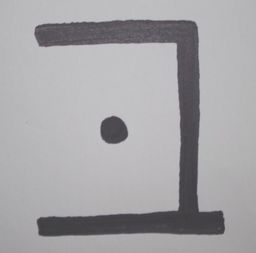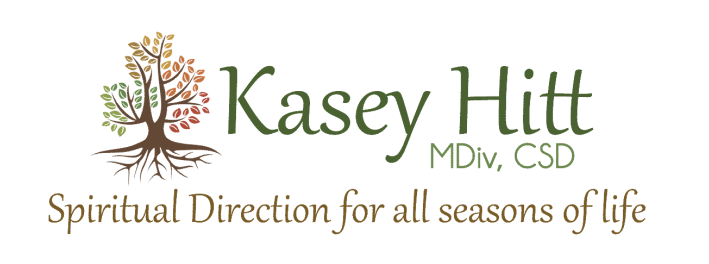 What do breadsticks have to do with the ancient practice of Lectio Divina? You're about to find out (and I don't think you'll ever forget!). At the recent Middle Tennessee Annual Centering Prayer Gathering, I listened to Father Carl Arico, one of the founding members of Contemplative Outreach, speak about "Centering Prayer as a Way of Life." Those of us who practice Centering Prayer often combine this silent prayer with Lectio Divina, Latin for Divine Reading. In a nutshell, Lectio Divina takes a short portion of Scripture and goes through 4 movements, sometimes referred to as the Four R's:
Father Carl told the story of a youth pastor friend of his who sought to teach his students Lectio Divina in a way that was easy to understand and difficult to forget! So he bought his youth group breadsticks. After passing them out, he told each teen to hold their breadstick in their hand. Then he walked them through the following:
Isn't this a wonderful way to learn to read Scripture? When we read or listen to a portion being read during Lectio Divina, it's like we're taking a bite but not chewing yet. When we move into meditation, we allow a word or phrase to stick out to us and spend time chewing on this bite of Scripture, reflecting on how it intersects with or speaks to our life. Then as we respond by bringing our voice to the Scripture through prayer, we swallow. And just like the ingested breadstick, contemplation invites us to rest in knowing we are being nourished by the word of Scripture through the Spirit of God in ways we have no idea. Now grab a breadstick or Bible and take a bite! Here are some suggested portions of Scripture from the life of Jesus:
 As division and divisive language continue to escalate, I think if Jesus were to choose one of his parables for us, he would share the story of The Good Samaritan and simply change the language. You may recall this parable found in Luke 10:25-37. A man is attacked by thieves, left to die and those of his own group pass him by (even crossing over to the other side of the street rather than helping him). But the one who stops, bandages his wounds, takes him to a place where he can be cared for and pays for his care is none other than the enemy! Hearing Dr. Amy-Jill Levine's words around this parable opened my eyes to be on the lookout for help coming from the "enemy camp." I found examples not only in the New Testament, but the Old Testament as well. Where did help come from for infant Moses pulled from the Nile? From the very palace of the murderous king who issued the order that all male Israelite babies be thrown into the river! The rescuing of Moses and the parable of The Good Samaritan remind me that people of compassion are everywhere (as are people of violence and indifference). They are found in every religion, in every political camp. It does no earthly good to continue to demonize those who are not like us. It's a waste of valuable time to continue to ruminate on how terrible those Republicans or Democrats are (or any group we are tempted to label and disdain). And it's certainly a waste of energy to share divisive Facebook posts or tweets! Instead, pause from posting about your enemy and join me for a moment to enter into this take on Jesus' parable. Read and then close your eyes, allowing yourself to take in the scene with all of your senses (which is to meditate on the passage):
Jesus' parables confused, confounded and disturbed its listeners. On purpose. For those courageous or curious enough to enter into them (to meditate or chew on them) they offered salvation. Whether a change of heart, a transformed mind, more freedom, mercy or love...whatever it is you're seeking today...what if Moses' own salvation and the parable are right? What if what you're looking for may just come from the enemy camp?!?  The Rabbi drew the Hebrew letter "Beth" on the big sheet of paper then turned to us and said, "Imagine this is a cow in a corral. All the other cows left, how's this cow stuck?" Over the next few minutes we threw out ideas of why or how this cow was stuck. It was stuck in mud, it was facing the wrong direction, its long tail was stuck in the fence... No matter what we came up with, we simply couldn't find the answer. When we gave up, he asked with a smile, "Do you want to know how it's stuck?" All of us nodded and he mischievously said, "It's stuck in your mind! It's not stuck at all, you bought the idea of stuckness!" And just like that, something shifted in me and I began asking myself, "Where have I bought into the idea of stuckness?" One place was in redesigning this website myself. After beginning the process, I became overwhelmed and shoved it into my mind's corral for eight months until I realized I'd bought my idea of being stuck. Months before I told a friend about a work relationship I felt stuck in and this wise Sister of Mercy told me three times (after each of my rebuttals), "You're not stuck." I couldn't see at the time how she could possibly be right. But after seeing the cow in the corral, I realized she'd been right all along! And in that moment my eyes saw the situation differently and out of the corral I stepped.
|
AuthorKasey is a scarf, ball and club juggling spiritual director just outside of Nashville, TN. Play helps her Type-A, Enneagram 1 personality relax, creating space for poetry and other words to emerge. She also likes playing with theological ideas like perichoresis, and all the ways we're invited into this Triune dance. Archives
January 2024
Categories
All
|
By clicking “Sign up for E-News” I consent to the collection and secure storage of this data as described in the Privacy Policy. The information provided on this form will be used to provide me with updates and marketing. I understand that I may modify or delete my data at any time.

 RSS Feed
RSS Feed

